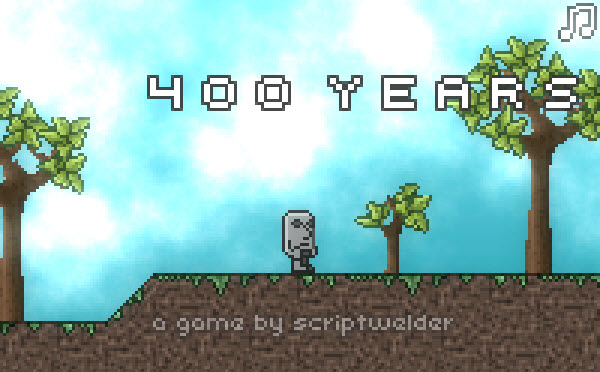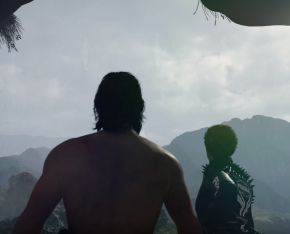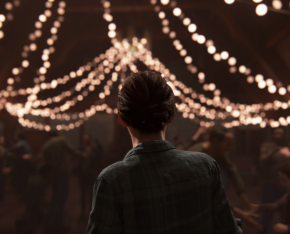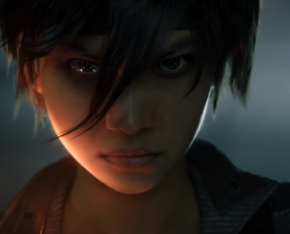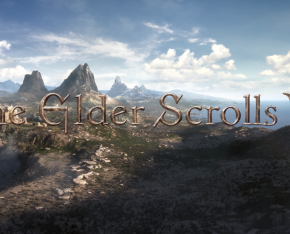By Anni Simpson on August 28, 2013 at 3:00pm
I was unsure about reviewing a flash game, but the premise of "400 Years" was just too interesting to pass up.
In “400 Years," you play as a stone idol who has to stop the world from being destroyed by an unnamed enemy, and you only have 400 years to do so. It is not your typical “jump over every obstacle and smash the boss’ head at the end of the level” kind of platformer. In the developer’s own words, you sometimes need to “[s]low down and think, just don’t wait too long.”
Game Play
Developer Armor Games was very serious about waiting and thinking. Although there are instructions on the screen early on telling you how to move and hints about the mechanics, it doesn’t teach you “how to play” outright per se. Years of playing platformers taught me to rush through the game depending on the enemies on the screen, so that’s what I did. At least, I tried to do that. When I came to the first obstacle, I didn’t get it. I was supposed to wait for the obstacle to pass, but what did that mean? When I did get it – the solution was to go back, wait for winter, and walk over the ice. By then, I only had 382 years left to save the world (when 399 would have sufficed), and I was annoyed at myself for my lack of reading comprehension.
At that point, the game became interesting again. The world is ending. You should feel rushed and terrified, and I still did. After all, some of the obstacles take “years” to accomplish. However, I also felt awe for the world my character was exploring. It was beautiful in spite of the simplistic graphics Armor employed (and possibly better for them), and it made a point very clearly: life goes on even when it doesn’t. Neither nature nor the people inhabiting the world know what’s coming. For that matter, neither do you.
Waiting is more than just a core concept; it’s a vital mechanic you can’t play the game without. Hitting “space” speeds up time in seasonal increments – spring flies by, then summer, then autumn, then winter. Before you know it, you’ve lost years of your life and time that could have been spent saving the world.
I don’t know how to feel about the puzzles your character faces. They’re both clever and difficult. They change the way you think about the platform genre in a fundamental way, because it employs almost none of the same tactics besides moving forward on a landscape. You don’t get to jump or step on any creatures. Instead, you amble aimlessly on, stopping to improve the world on your way. I’m torn between the difficulty of the puzzles (which are not intuitive) and the feeling you get watching the world develop. For example, the group of people you run into early on evolves over time because of something you did. That part is incredible.
Aside from figuring out the puzzles, there isn’t a lot to “400 Years.” You have a backdrop, and you move left or right depending on the requirements of the obstacle. If you need to go down, you simply fall. Having easy-to-grasp functions did make it easier to focus on the objective.
Music
The music for this game is stunning. The first track is soothing and gentle, which is entirely appropriate for the mood that the game was attempting to create, and it promoted the core concept of taking your time, slowing down, and exploring the world. It also created a sort of sadness. How do you feel when you’re looking at a place for possibly the last time? I can’t really describe it – way to fail, English major – but the score did that for me. My hat goes off to you, Kevin MacLeod.
However, it got repetitive after playing the early part of the game for a long time, and I ended up muting it after about a half an hour. It’d be beneficial to have a soundtrack a little longer or a second track when you have to stop and smell every rose and climb every tree over the course of several lifetimes. I’m willing to concede this point given that it is a flash game and may not have had the budget to pay for a score specific for the game. (MacLeod's music is royalty-free.)
To its credit, it does change towards the end of the game where you reach the final objective – the thing that will end the world. I feel the same way about the second track that I did the first – appropriate for what you’re doing and supposed to feel but repetitive after a short period of time.
Conclusion
For a flash game, I’m super impressed with the thought that went into “400 Years,” as well as the innovative nature of the game play. I got stuck on what I believed were non-intuitive puzzles several times. But it’s not a bad thing to make your player think. Aren’t we all a little sick of derivative, AAA titles where there are no surprises? I just wasn’t expecting the direction they took the game at all, and it wasn’t necessarily clear from the game’s instructions that I had to fall through the broken ice or plant new trees. That doesn’t mean I didn’t like that direction, though. The premise was brilliant enough to make me want to complete the game and save the world.
Overall, Armor Games did a great job with the graphics they developed and the story they wrote. For a game so short and simple, it was interesting and thought-provoking. “400 Years” is definitely worth a run-through in my opinion.
